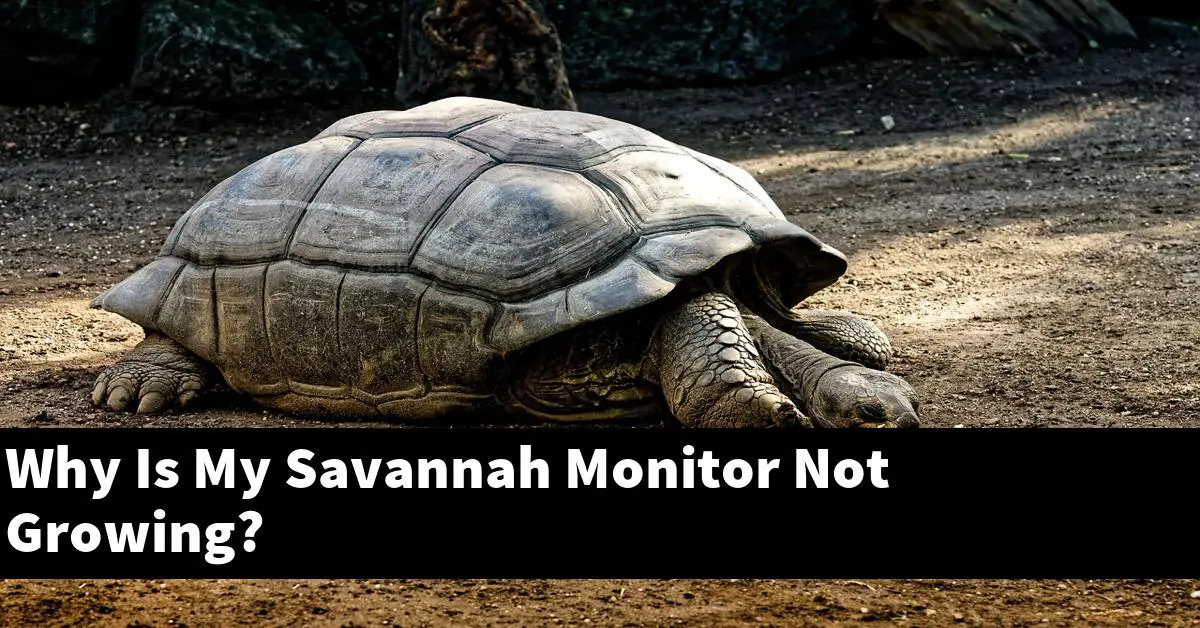If you’ve been caring for a Savannah monitor for a while, you may have noticed that it hasn’t been growing as quickly as you would like.
There are a few reasons why this may be happening, and in this blog post, we’ll go over some of the most common ones. Keep reading to learn more about why your Savannah monitor isn’t growing and what you can do about it.
Table of Contents
Why is my Savannah monitor not growing as fast as I expected?
There are a few reasons your Savannah monitor might not be growing as fast as you expected.
- One possibility is that it is not getting enough food. Make sure you are feeding your monitor a nutritious diet that includes plenty of protein.
- Another possibility is that it is not getting enough exercise. Be sure to provide your monitor with a large enclosure that allows it to move around and explore.
- Finally, keep in mind that some Savannah monitors simply grow more slowly than others.
If your monitor is healthy and you are providing it with everything it needs, be patient and it will eventually reach its full size.
How fast do monitor lizards grow?
Monitor lizards grow at different rates depending on the species. Some species of monitor lizards can grow up to 24 inches in length in a single year, while others may only grow a few inches.
The growth rate also depends on the lizard’s age, with younger lizards growing faster than older ones. Generally, monitor lizards reach their full size after about 5 years.
How much do full-grown savannah monitors weigh?
The average full-grown savannah monitor weighs about 10-15 pounds. Some savannah monitors can reach up to 20 pounds, but this is rare. Male savannah monitors are typically larger than females, but there is considerable variation in size between individual animals.
How big does a Savannah monitor get in a year?
The answer to this question depends on a few factors, including the sex of the monitor, the species of monitor, and the environment in which it lives.
Generally, male Savannah monitors grow larger than females. On average, males can grow to be about 2.5 feet long, while females tend to be about 2 feet long. However, there are always exceptions to this rule, and some individual monitors may grow to be larger or smaller than average.
The species of monitor also plays a role in how big it can grow. For example, the Nile monitor (Varanus niloticus) is the largest species of monitor, and can grow to be up to 6 feet long! In contrast, the smallest species of monitor is the dwarf monitor (Varanus bitatawa), which only grows to be about 12 inches long.
Finally, the environment in which a monitor lives can impact its size. Monitors that live in the wild tend to be larger than those that are kept in captivity, as they have more space to roam and more access to food.
Additionally, monitors that live in hotter climates tend to be larger than those that live in cooler climates, as they need to have a larger body mass to help them regulate their body temperature.
So, to answer the question, “How big does a Savannah monitor get in a year?”, it really depends on the individual monitor. Some monitors may only grow a few inches in a year, while others may grow several feet.
How long does it take for a savannah monitor to grow?
A savannah monitor can grow to be about two to three feet long. However, they can grow even larger in captivity. In the wild, these lizards typically live for about 20 years.
Summary
If you’re wondering why your Savannah monitor isn’t growing, it could be due to a few different reasons. It could be that your lizard isn’t getting enough food, or it could be that the temperature in its enclosure isn’t warm enough.
If you’re providing your lizard with enough food and the temperature in its enclosure is appropriate, then it could be that your lizard is just a slow grower. Some Savannah monitors take longer to reach their full size than others.
If you’re concerned about your lizard’s growth, the best thing to do is to consult with a reptile veterinarian. They will be able to help you figure out what might be causing the problem and how to fix it.

